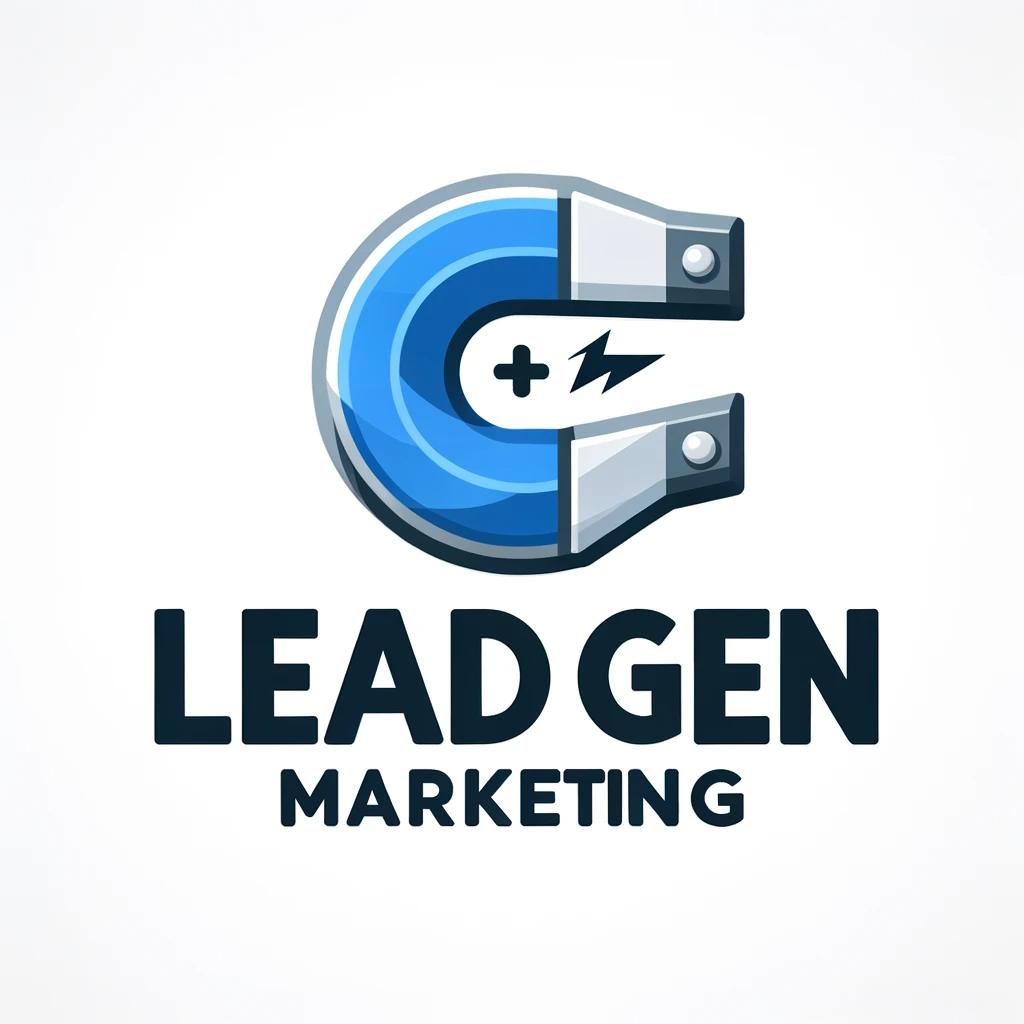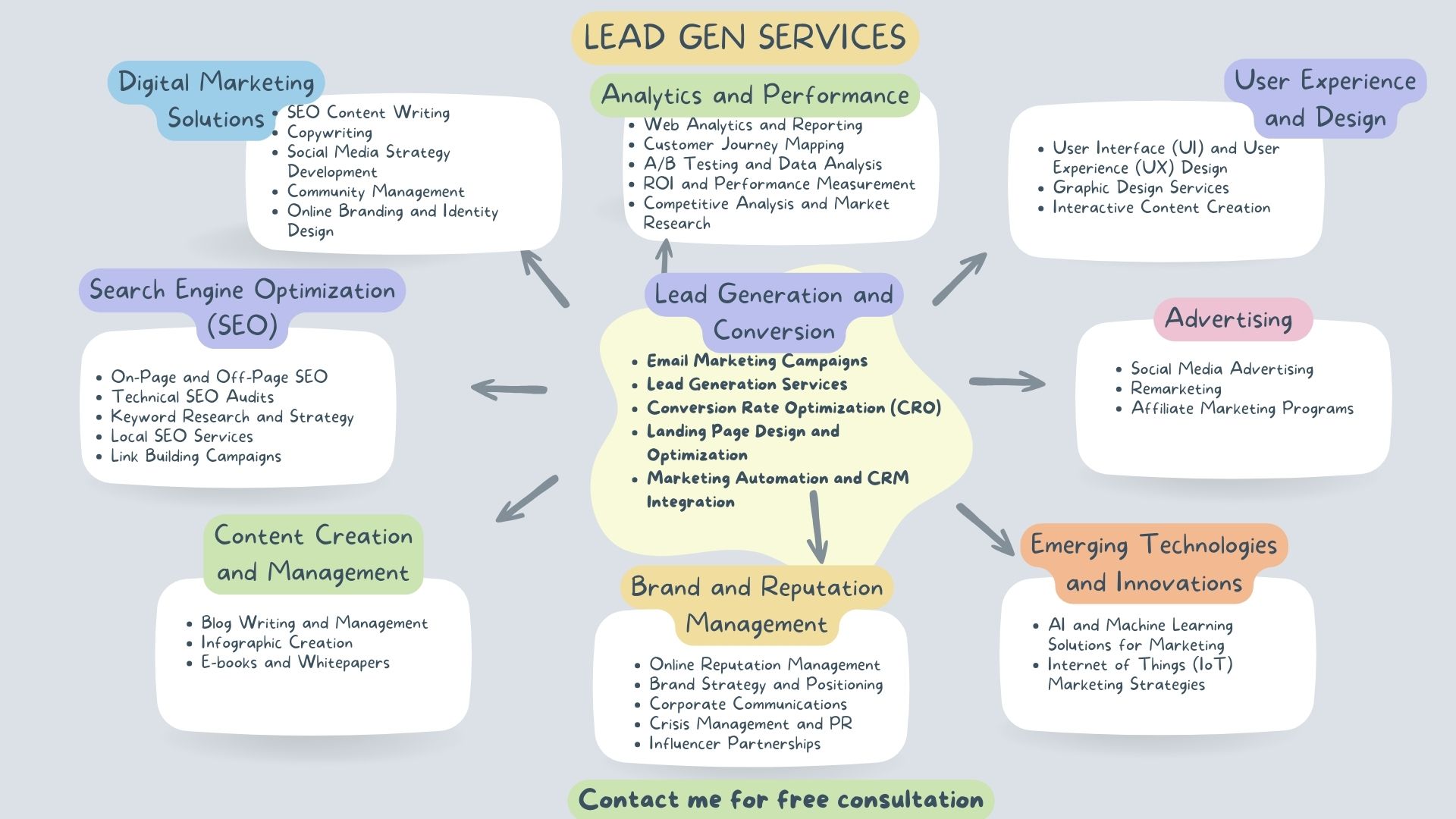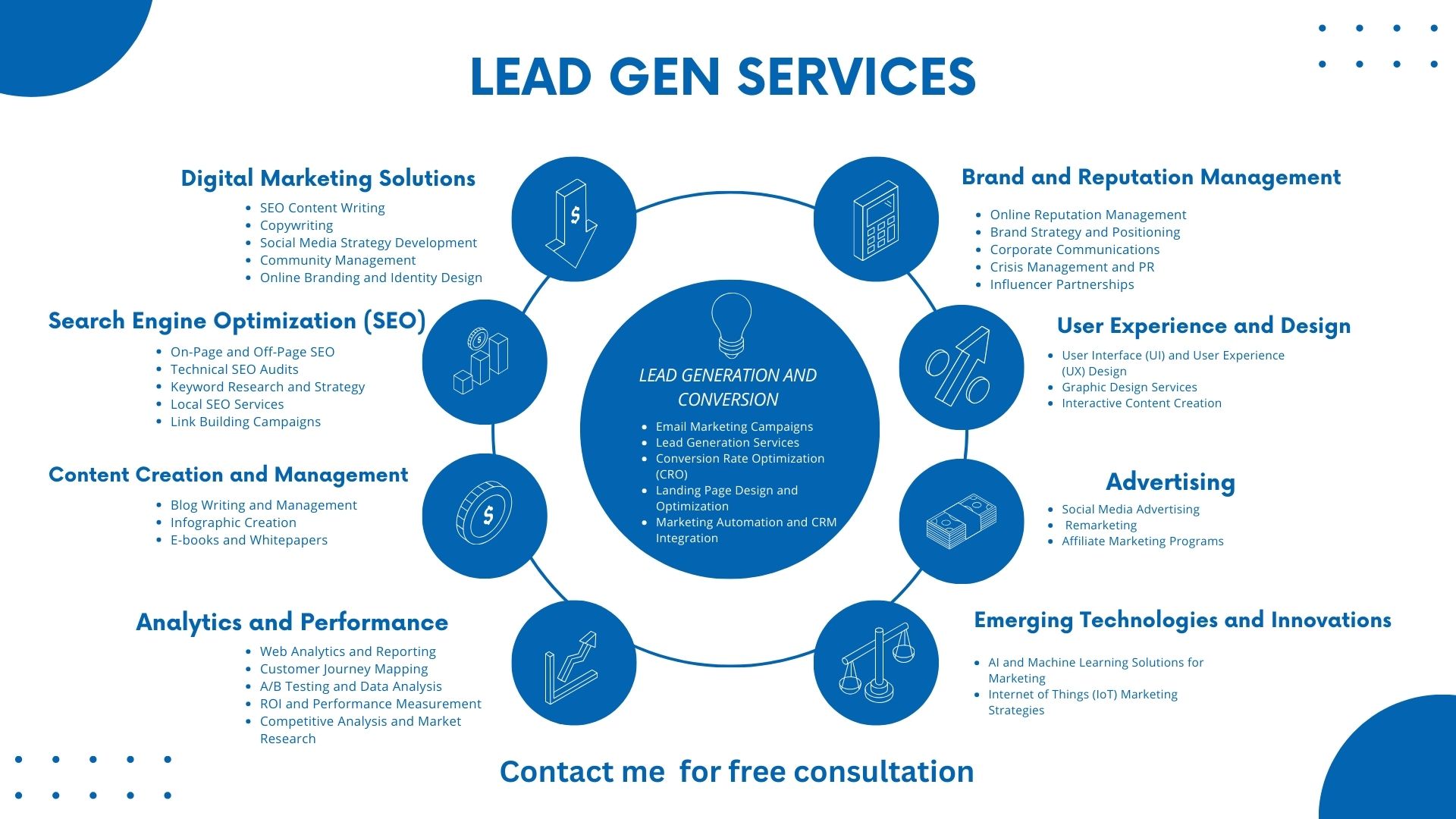Sales teams and marketing departments rely on lead generation and prospecting for potential clients to drive revenue and grow their customer base. Both lead generation and sales prospecting play crucial roles in the sales process, but they serve different purposes and require distinct approaches. In this blog, we will explore the definitions, methods, and challenges of lead generation and sales prospecting and discuss when and how to effectively implement each strategy for maximum results.
Understanding Lead Generation
Lead generation identifies potential clients and captures their contact information, such as email addresses, phone numbers, or social media profiles. The goal is to attract prospects and initiate customer interest, ultimately building a customer base and nurturing leads through the sales funnel.
Lead generation strategies and tactics include content marketing, inbound marketing, social media platforms, online advertising, and email campaigns. Effective lead generation strategies target the right audience and utilize marketing campaigns and lead magnets, such as downloadable content, webinars, or exclusive offers, to capture potential clients’ contact details.
While lead generation is an essential process, it comes with challenges. One of the main challenges is obtaining valuable information about potential clients, such as their email addresses or social media profiles, which can be used for outreach. Prospecting can also be time-consuming, requiring research and outreach to identify and reach potential clients. Additionally, lead generation strategies may face difficulties in warm lead engagement, as prospects may not be ready to engage or convert into customers.
Exploring Sales Prospecting
On the other hand, sales prospecting focuses on identifying and directly reaching potential clients, typically through cold calling, email campaigns, and social media outreach. Sales prospecting involves contacting and engaging potential clients who fit the ideal customer profile.
Sales prospecting is identifying potential clients and their contact details and then contacting them to establish contact and generate new leads or prospects. It involves cold calling, email campaigns, social media outreach, and networking strategies. It aims to identify potential clients who fit the ideal customer profile and may be interested in the offered product or service.
Cold calling and cold email campaigns are typical sales prospecting techniques where sales teams directly reach out to potential clients and engage in conversation to generate leads and prospects. Networking and referral tactics are often used, leveraging personal connections and recommendations, and automation and personalization play a crucial role in sales prospecting strategies, enabling sales teams to target potential clients efficiently and effectively.
Sales prospecting also comes with its own set of challenges. Identifying potential clients and obtaining their contact information can be a hurdle, and sales prospecting strategies may face difficulties in lead prospecting as valuable information and contact details may be limited or hard to come by. Additionally, identifying and reaching potential clients, especially decision-makers, can be challenging, and sales prospecting strategies may face difficulties in reaching the right audience and generating valuable leads.
Distinguishing Between Lead Generation and Prospecting

While lead generation and sales prospecting share the ultimate goal of generating data-driven leads and prospects, there are key differences in their approaches and execution. Understanding these differences is crucial for sales teams and marketing departments to utilize both strategies and optimize their sales processes effectively.
Key Differences Between Sales Prospecting and Lead Generation
Lead generation primarily involves marketing activity, where prospects are attracted and valuable information, such as email addresses, is captured for outreach and sales campaigns. On the other hand, sales prospecting engages salespeople and focuses on directly contacting potential clients, typically through cold calling, email campaigns, and social media outreach.
In lead generation, strategies target prospects and the target market to capture valuable contact information and initiate customer interest. In sales prospecting, strategies target potential clients and aim to engage and convert leads into customers.
Lead generation strategies often utilize lead magnets, content marketing, and inbound marketing, while sales prospecting strategies rely on cold calling, outreach, networking, and referral tactics.
Here are 85 Key Sales Statistics That’ll Help You Sell Smarter in 2023
Common Misconceptions
Despite their distinct roles, lead generation and prospecting are often misunderstood, and their purposes and strategies can be misinterpreted. One common misconception is that they are the same when they serve different stages of the sales process.
Lead generation focuses on creating brand awareness, attracting prospects, capturing valuable contact details, and nurturing leads through marketing campaigns.
Prospecting, on the other hand, is about individual outreach and personal contact, engaging potential clients, and converting leads into customers.
Misunderstanding them can lead to ineffective sales strategies and misallocation of resources, as each strategy requires a different approach and serves a specific purpose in the sales process.
How to Effectively Generate Leads
Now that we understand lead generation better let’s explore strategies and lead techniques to generate leads and drive customer acquisition effectively. If you need additional help, we are always here for you.
SEO Blog Post Optimization and Targeted Advertising
Implementing Google SEO blog post best practices and targeted advertising strategies can increase online visibility and attract leads actively searching for relevant content. Keyword research and strategically placing content can improve website ranking and lead generation potential, ensuring prospects find and engage with your brand.
Targeted advertising campaigns, such as social media and online display ads, can effectively reach potential clients and capture their interest, ultimately driving CPA lead generation and customer acquisition.
Using Lead Magnets and Webinars
Offering valuable lead magnets, such as exclusive content, webinars, or resources, can incentivize prospects to provide their contact details and engage with your brand. Effective lead magnets address specific pain points and offer valuable solutions, positioning your brand as a valuable resource in the buyer’s journey and converting leads into prospects.
Crafting compelling and relevant lead magnets and strategically placing them on landing pages and marketing campaigns can attract and convert prospects, contributing to successful lead-generation efforts.
Leveraging Software Assistance (CRM)
Utilizing automation and customer relationship management (CRM), platforms can streamline lead generation, lead nurturing, and sales pipeline management, improving overall efficiency and effectiveness. Software assistance enables tracking and analyzing lead generation campaigns, providing valuable insights for marketing strategies and sales processes, and facilitating team coordination and data management.
Integrating lead generation and sales prospecting efforts within a centralized platform can facilitate seamless coordination, information sharing, and data management, enhancing lead generation and customer acquisition.
Strategies for Successful Prospecting Lead Generation

In addition to lead generation, sales prospecting strategies are crucial for engaging potential clients and generating new leads and prospects. Let’s explore some strategies and techniques for successful sales prospecting.
LinkedIn Networking & Social Media Utilization
Leveraging social media platforms and LinkedIn networking events can provide valuable opportunities to engage with potential clients and establish meaningful connections directly. Effective social media utilization includes content marketing and engagement strategies, building brand awareness, and nurturing warm leads through valuable content and interactions.
Networking and social media platforms like LinkedIn offer valuable prospecting channels, expanding sales teams’ outreach and generating new prospects and leads.
Demographic Segmentation Techniques
Demographic segmentation strategies enable sales teams to target and tailor outreach to specific customer segments, ensuring relevance and personalization in prospecting campaigns. Understanding the target market’s demographic details and preferences allows sales teams to craft valuable and personalized outreach messaging, increasing the likelihood of engagement and lead generation.
Demographic segmentation techniques enhance prospecting and lead generation, optimizing marketing campaigns and sales strategies for target audiences and customer acquisition.
Mastering the Art of Cold Outreach to get a Referral
Though often perceived as challenging, cold calling can be an effective traffic generation and sales prospecting technique. Thorough prospecting and lead research, understanding potential clients’ pain points and needs, and personalizing cold calling outreach can establish meaningful connections and build prospect trust.
Mastering cold calling involves strategies for engaging potential clients, understanding and addressing objections, and navigating conversations toward valuable prospects and leads, ultimately driving sales and customer acquisition.
Email Marketing: A Powerful Tool for Lead Generation

Email marketing remains one of the most effective methods for generating leads. Businesses can reach a large audience with personalized messages by leveraging targeted email campaigns. The key to success is crafting engaging content that resonates with the recipient’s interests and needs. This involves segmenting your email list based on customer demographics and behavior to ensure relevancy. Additionally, incorporating a solid call-to-action and optimizing emails for mobile devices can significantly boost engagement rates. Tracking metrics like open and click-through rates also helps refine the strategy.
AI for Lead Generation: Revolutionizing Sales Prospecting
One of the key benefits of AI for lead generation is its ability to analyze vast amounts of data quickly and accurately. This capability enables sales teams to identify patterns and insights that would be impossible to discern manually.
Moreover, AI-driven tools can automate routine tasks such as lead scoring, segmentation, and nurturing, freeing up sales professionals to focus on more complex and high-value activities.
Another area where AI excels is predictive analytics. AI algorithms can forecast future trends and customer behavior, enabling sales teams to anticipate market shifts and adapt their strategies accordingly.
Furthermore, AI chatbots and virtual assistants have become invaluable tools in lead generation. They offer immediate, round-the-clock interaction with potential leads, providing information, answering queries, and even qualifying leads based on predefined criteria.
Combining Lead Generation and Sales Prospecting for Maximum Results
Both lead generation and sales prospecting strategies have their strengths and purposes, and integrating them can lead to a more comprehensive and effective sales approach. Let’s explore how combining lead generation and sales prospecting strategies can maximize lead generation and customer acquisition.
When to use Which?
Understanding the buyer’s journey and sales funnel helps determine when to leverage lead generation or sales prospecting strategies. In an ideal world, lead generation strategies for B2B are best suited for top-of-the-funnel prospects, where brand awareness and customer interest are initiated. Sales prospecting, on the other hand, is ideal for warm leads and potential clients who fit the ideal customer profile and have shown potential interest.
By combining lead generation and sales prospecting, sales teams can optimize the sales process, nurture leads, and convert prospects into valuable clients, ultimately driving sales and revenue growth.
Is it better to focus on lead generation or sales prospecting?
Lead generation and sales prospecting are vital to customer acquisition and revenue generation. Focusing on one strategy alone may not lead to optimal results. It is best to balance lead generation and sales prospecting, utilizing each strategy’s strengths and benefits and aligning them with sales objectives and customer acquisition goals.
Lead generation strategies attract potential clients and prospects, while sales prospecting strategies engage and convert leads into customers. By integrating them, sales teams can create a well-rounded sales approach and maximize sales opportunities. We must consider website bot detection in our lead generation and prospecting strategies.
When prospecting and lead generation work together
Integrating prospecting and lead generation strategies creates synergy and alignment between marketing and sales teams, enhancing the sales funnel and customer acquisition process. Let’s explore the benefits of combining lead generation and sales prospecting strategies and how they work together for maximum results.
When lead generation and prospecting collaborate, it streamlines the sales pipeline. It ensures a seamless transition from marketing campaigns, content, and lead generation efforts to sales prospecting, outreach, and customer engagement. The synergy between lead generation and prospecting leads to a more efficient and effective sales process, boosting sales rep productivity and customer acquisition.
Ready to transform your revenue team?
To transform your revenue team, aligning lead generation and prospecting strategies with sales objectives and customer acquisition goals is essential. Enhancing sales performance requires a cohesive approach, leveraging lead generation and prospecting strategies to drive sales and revenue growth.
Are you ready to optimize customer acquisition? Integrate lead generation and prospecting strategies, streamline the sales process, and transform your revenue team for success.
Conclusion
In conclusion, lead generation and prospecting are essential business strategies to drive sales and revenue. Lead generation focuses on attracting and capturing potential customers, while prospecting involves actively reaching out and qualifying leads.
While each strategy has its advantages and challenges, combining both methods for maximum results is the most effective approach. By leveraging targeted advertising, lead magnets, networking, and cold-calling techniques, businesses can generate quality leads and engage with them in a personalized manner. Understanding the key differences between lead generation and prospecting is essential, and using them strategically based on your business goals is important.
Contact us today if you’re ready to transform your revenue team and optimize your lead generation and prospecting efforts.




No responses yet